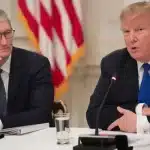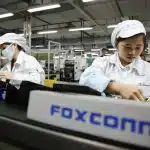Apple’s efforts to shift iPhone production to India hit a major roadblock as former President Donald Trump announced a 50% import tariff on Indian goods. The move, aimed at penalizing India for purchasing Russian oil, comes just as Apple prepares to ship the iPhone 17 from its Indian plants to the U.S.
For years, Apple has worked to reduce reliance on China by expanding operations in countries like India. This strategy gained traction during the U.S.-China trade war, when tariffs on Chinese imports climbed sharply. India emerged as a cost-effective alternative, even with an existing 25% import duty.

Tariff Increase Tied to Geopolitical Tensions
Trump initially hinted at increased duties due to India’s growing oil trade with Russia. India, once a minor buyer of Russian crude, became one of its top customers after the Ukraine invasion. The new tariff doubles the previous 25% rate, taking effect August 27—right in the middle of the iPhone 17 import season.
While the tariff primarily targets India’s oil policies, it has significant ripple effects. Apple, which has invested heavily in Indian manufacturing, now faces unexpected costs. What was once a strategic move to sidestep China-related fees could now backfire.
Trade Deal Talks Stalled
Trade negotiations between the U.S. and India have faltered. Trump cited India’s failure to finalize a deal as a key reason for the tariff hike, accusing the country of imposing some of the world’s highest tariffs. Former Indian finance secretary Subhash Garg recently expressed doubts about any near-term resolution, citing conflicting political interests.
A U.S. trade delegation was expected to visit New Delhi in August, but optimism is fading. With no immediate trade deal in sight, Apple—and other U.S. firms relying on Indian manufacturing—may face long-term complications.











